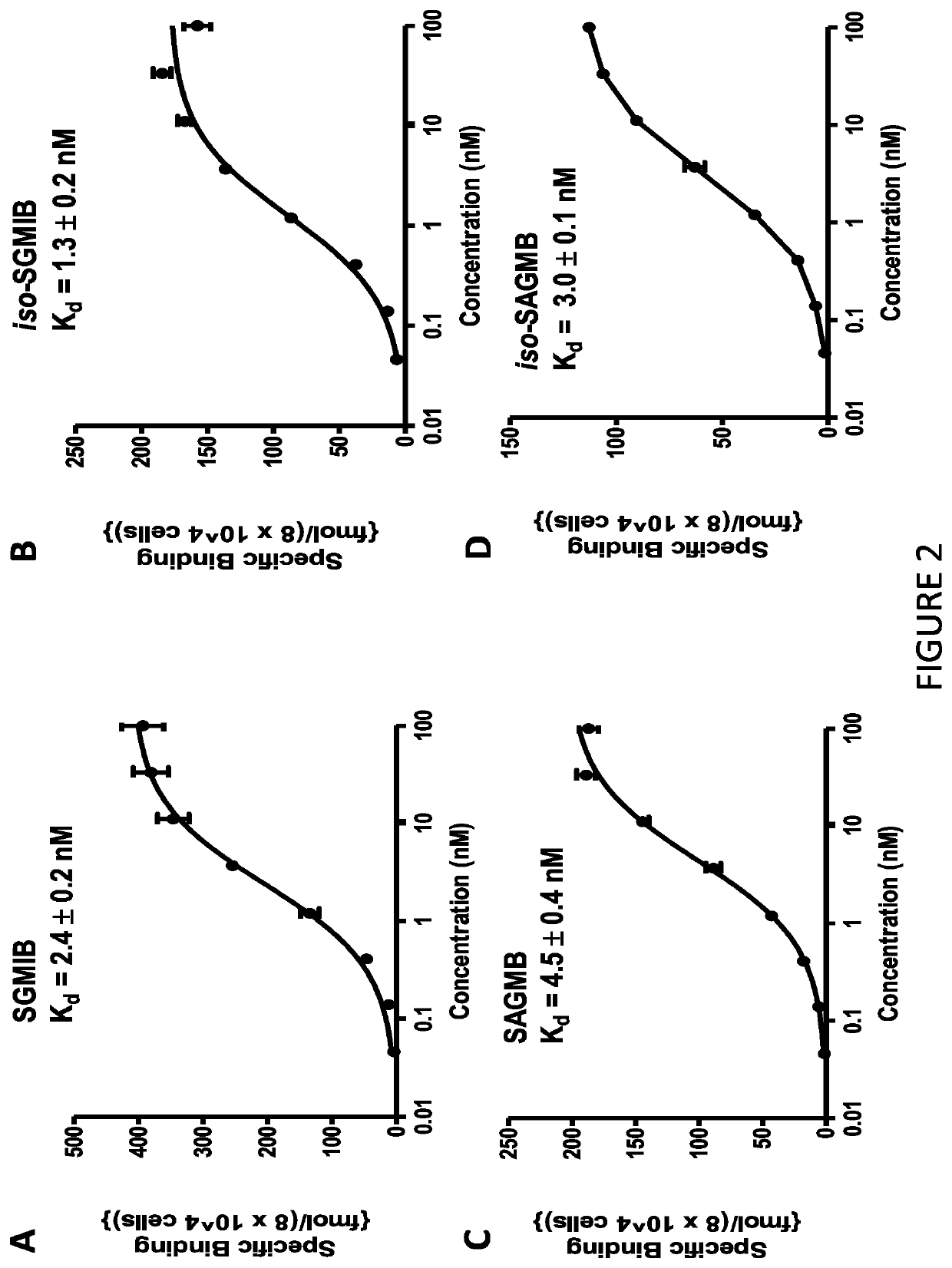Radiolabeled biomolecules and their use
a biomolecule and radiolabeled technology, applied in the field of radiolabeled biomolecules and their use, can solve the problems of low tumor to tumor ratio, low tumor background ratio, and high background level after systemic administration, so as to minimize the loss of radioactive halogen, minimize the retention of radioactivity, and maximize the retention of diseased cells
- Summary
- Abstract
- Description
- Claims
- Application Information
AI Technical Summary
Benefits of technology
Problems solved by technology
Method used
Image
Examples
embodiment 1
[0140]A compound represented by Formula I (including prosthetic compounds and radiohalogen precursors):
wherein:
[0141]X is CH or N;
[0142]L1 and L3 are independently selected from a bond, a substituted or unsubstituted alkyl chain, a substituted or unsubstituted alkenyl chain, a substituted or unsubstituted alkynyl chain, and a polyethylene glycol (PEG) chain;
[0143]MMCM is a macromolecule conjugating moiety;
[0144]L2 is a substituted or unsubstituted alkyl chain, a substituted or unsubstituted alkenyl chain, a substituted or unsubstituted alkynyl chain, or a polyethylene glycol (PEG) chain comprising at least three oxygen atoms, wherein L2 optionally contains a Brush Border enzyme-cleavable peptide;
[0145]CG is selected from guanidine, PO3H, SO3H, one or more charged D-amino acids, arginine or phosphono / sulfo phenylalanine, glutamate, aspartate, lysine, a hydrophilic carbohydrate moiety, a polyethylene glycol (PEG) chain, and guanidino-Z;
[0146]Z is (CH2)n;
[0147]n is greater than 1; and
[...
embodiment 2
[0149]The compound of Embodiment 1, wherein Y is an alkyl metal radiohalogen precursor selected from the group consisting of trimethyl stannyl (SnMe3), tri-n-butylstannyl (SnBu3) and trimethylsilyl (SiMe3).
embodiment 3
[0150]The compound of Embodiment 1, wherein Y is a radioactive halogen selected from the group consisting of 75Br, 76Br, 77Br, 123I, 124I, 125I, 131I, and 211At.
PUM
| Property | Measurement | Unit |
|---|---|---|
| size | aaaaa | aaaaa |
| hydrophilic | aaaaa | aaaaa |
| radioactive | aaaaa | aaaaa |
Abstract
Description
Claims
Application Information
 Login to View More
Login to View More - R&D
- Intellectual Property
- Life Sciences
- Materials
- Tech Scout
- Unparalleled Data Quality
- Higher Quality Content
- 60% Fewer Hallucinations
Browse by: Latest US Patents, China's latest patents, Technical Efficacy Thesaurus, Application Domain, Technology Topic, Popular Technical Reports.
© 2025 PatSnap. All rights reserved.Legal|Privacy policy|Modern Slavery Act Transparency Statement|Sitemap|About US| Contact US: help@patsnap.com



